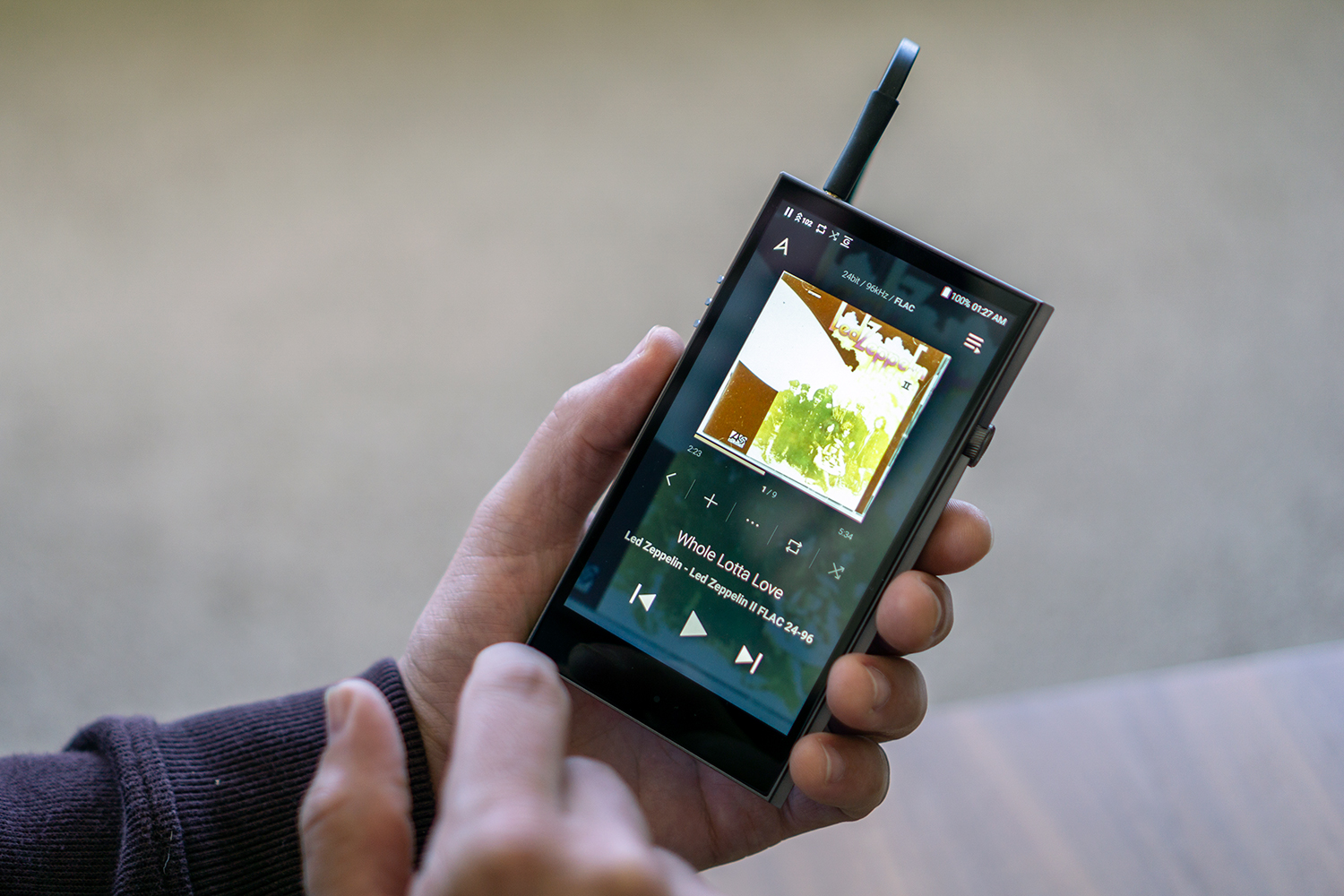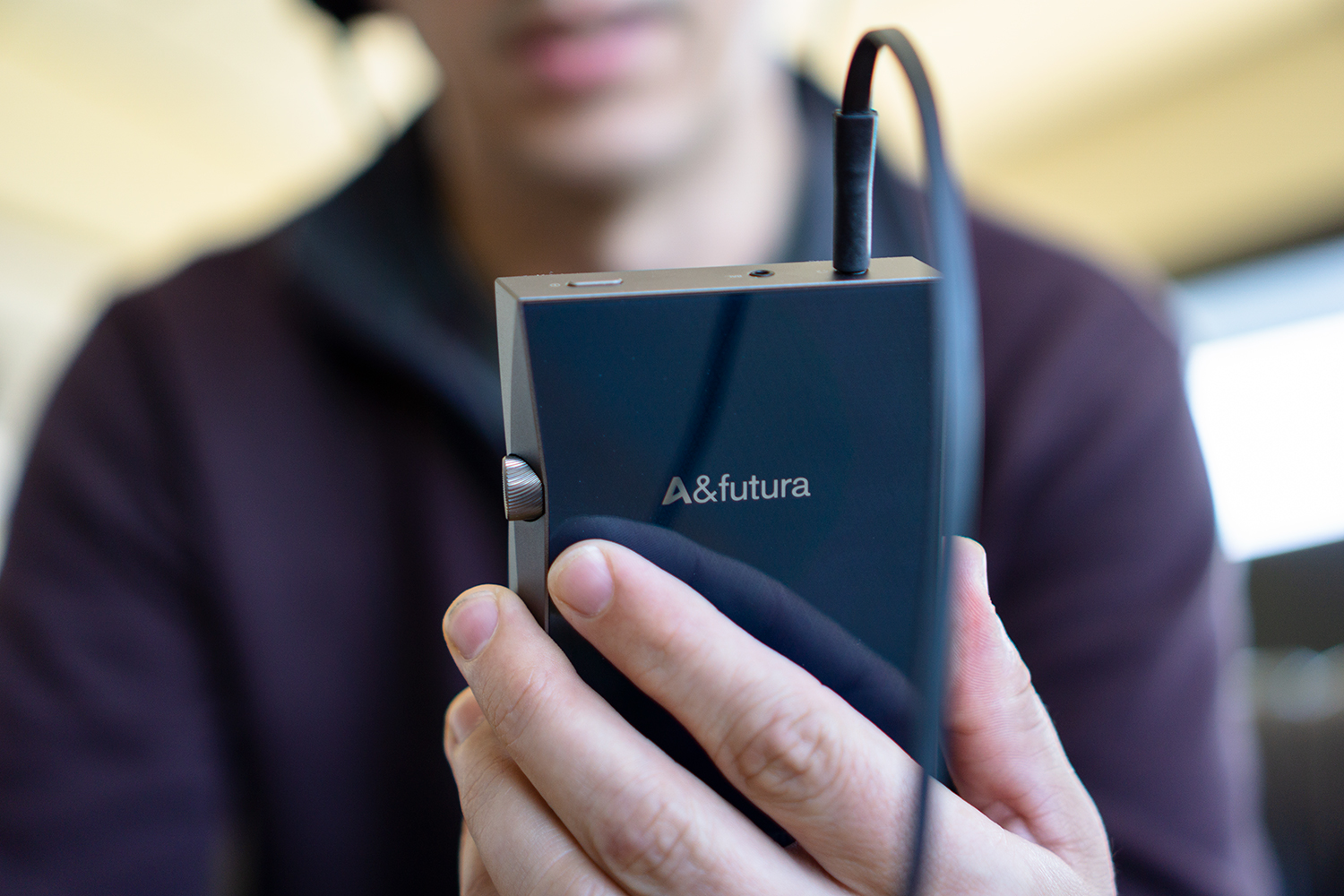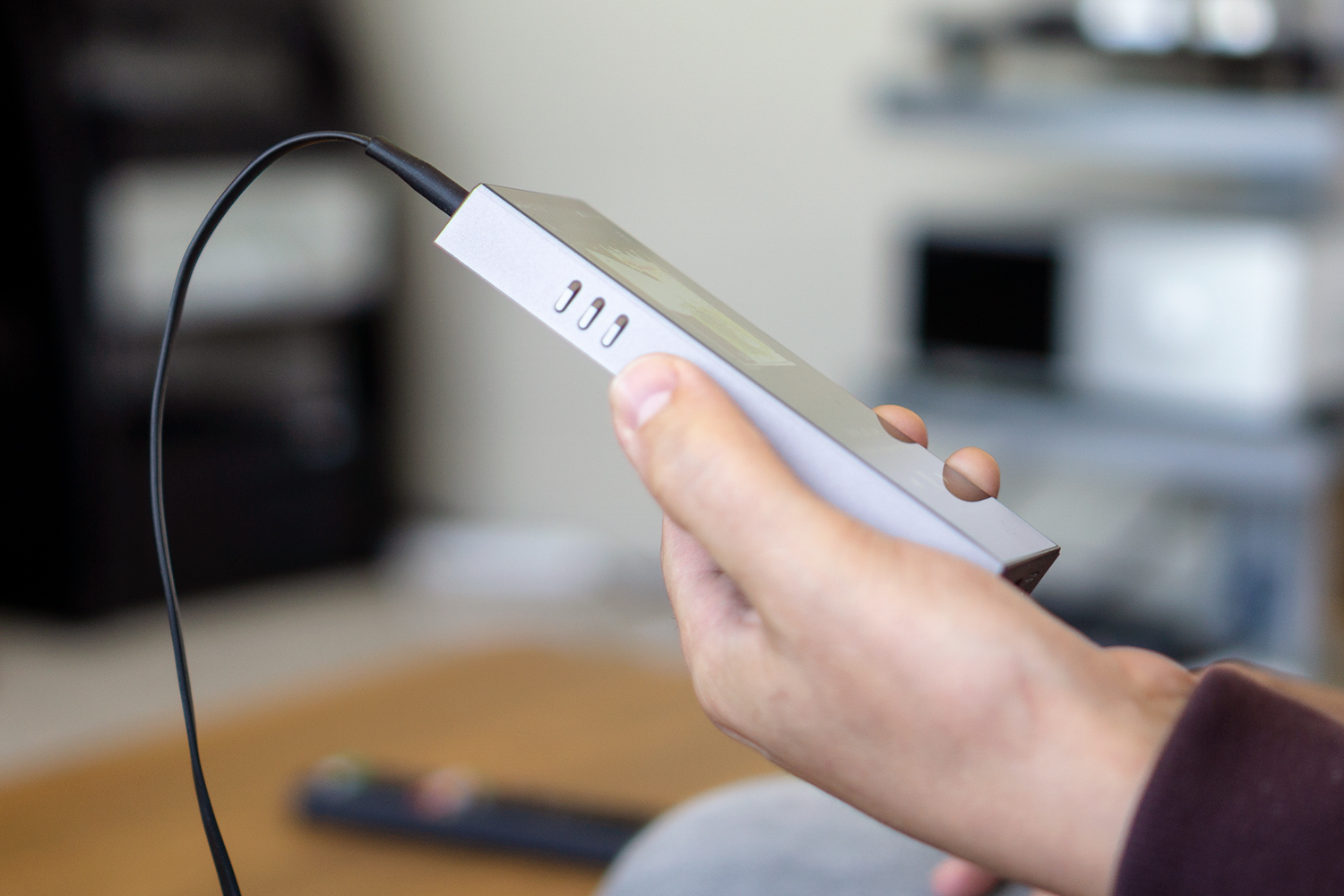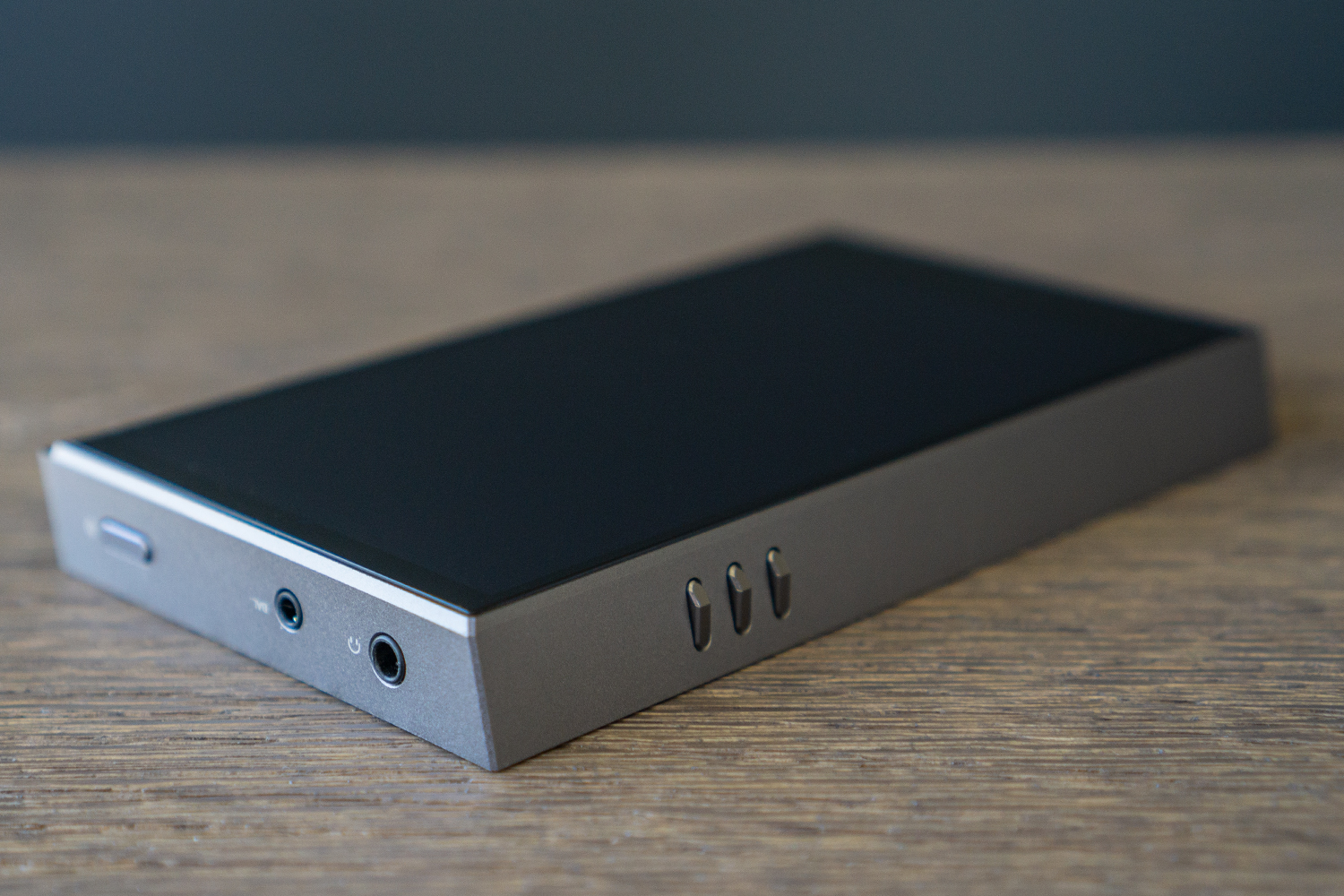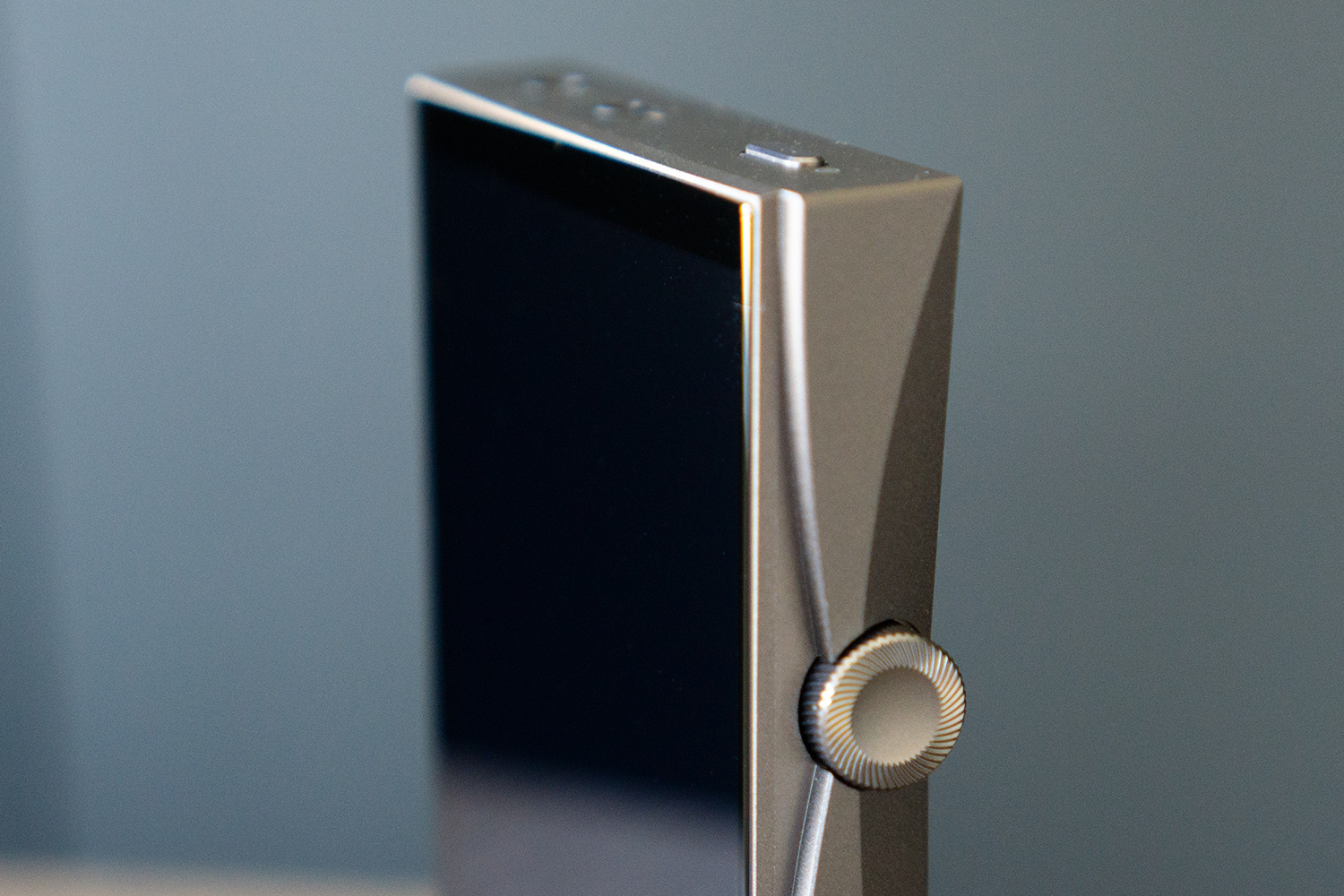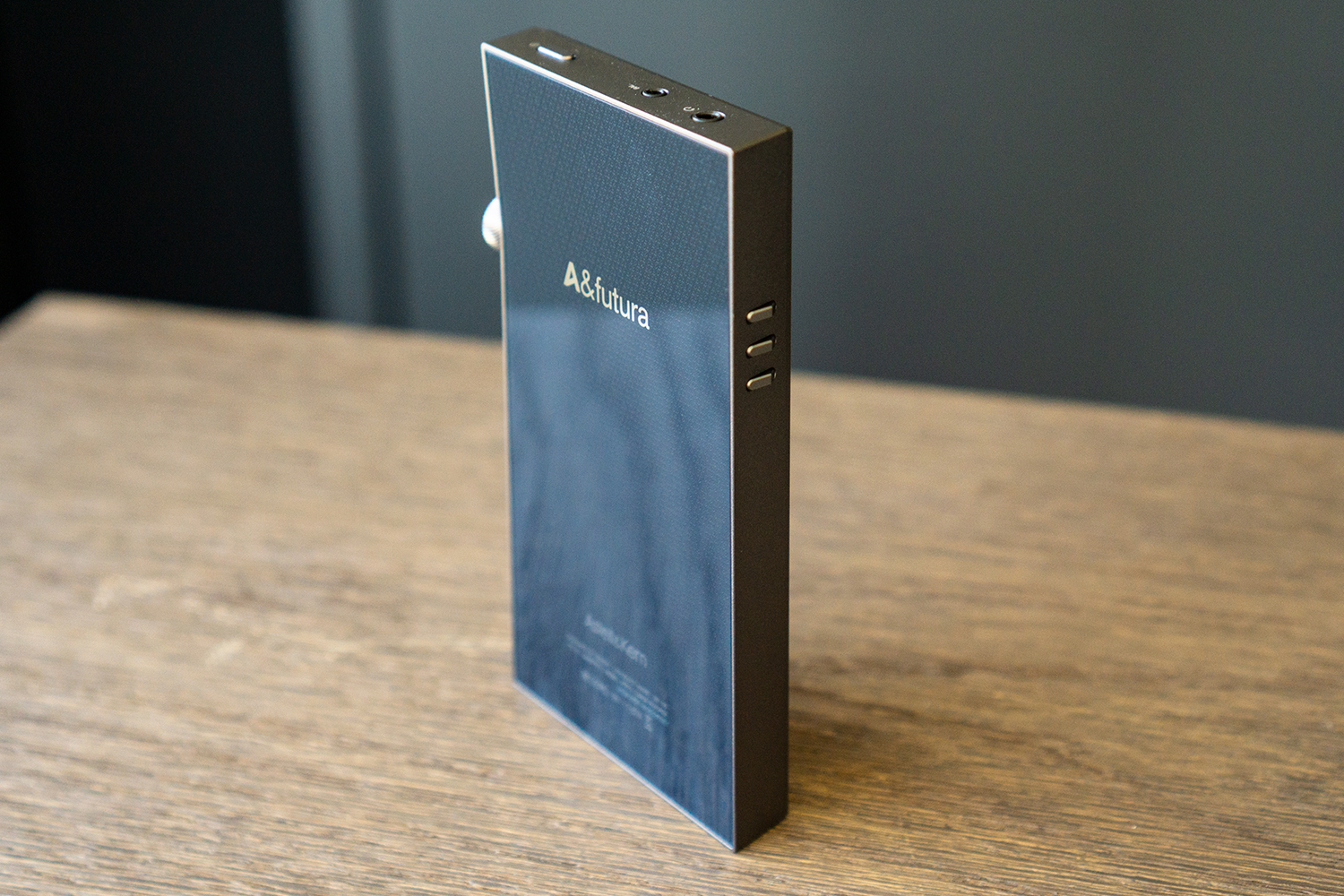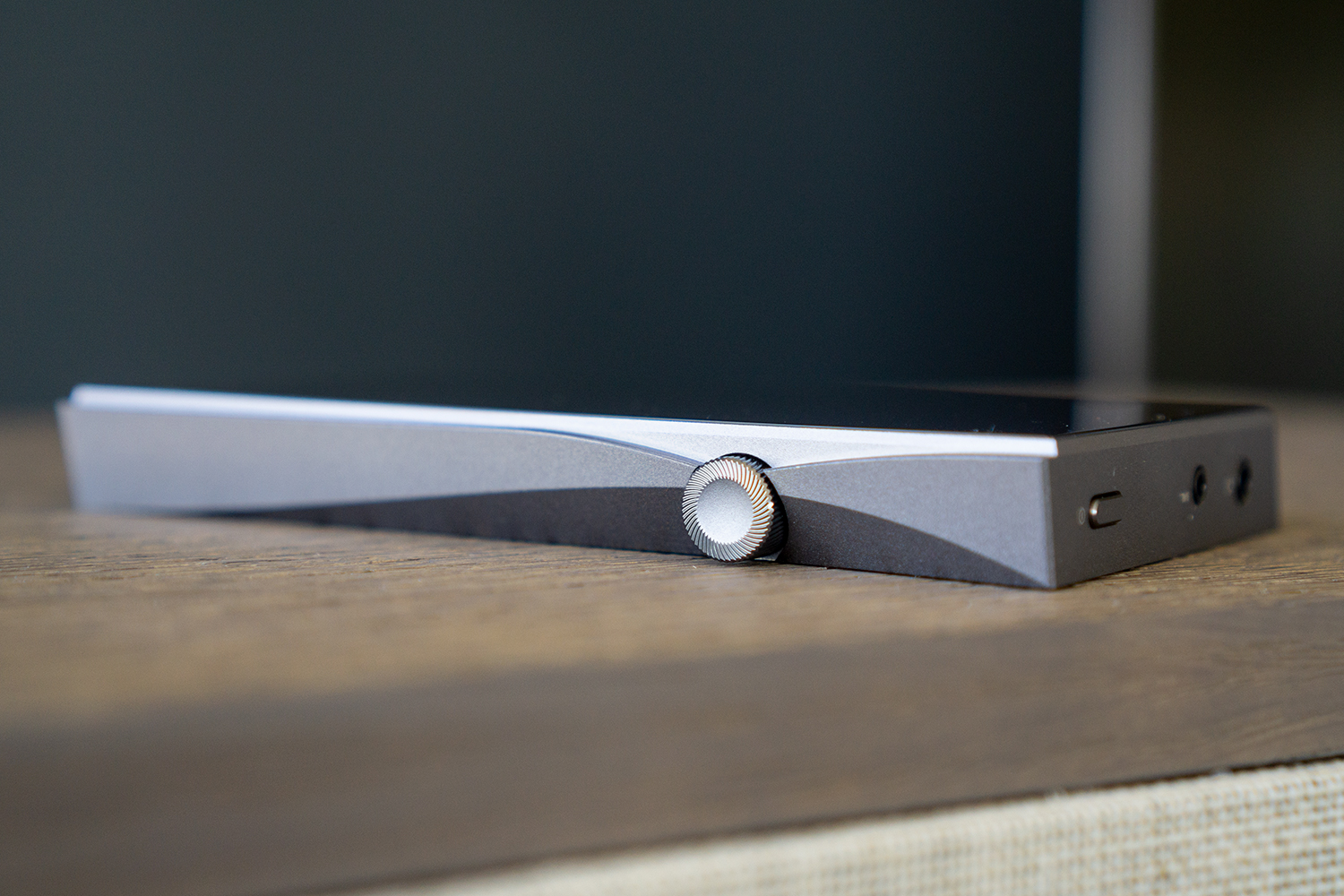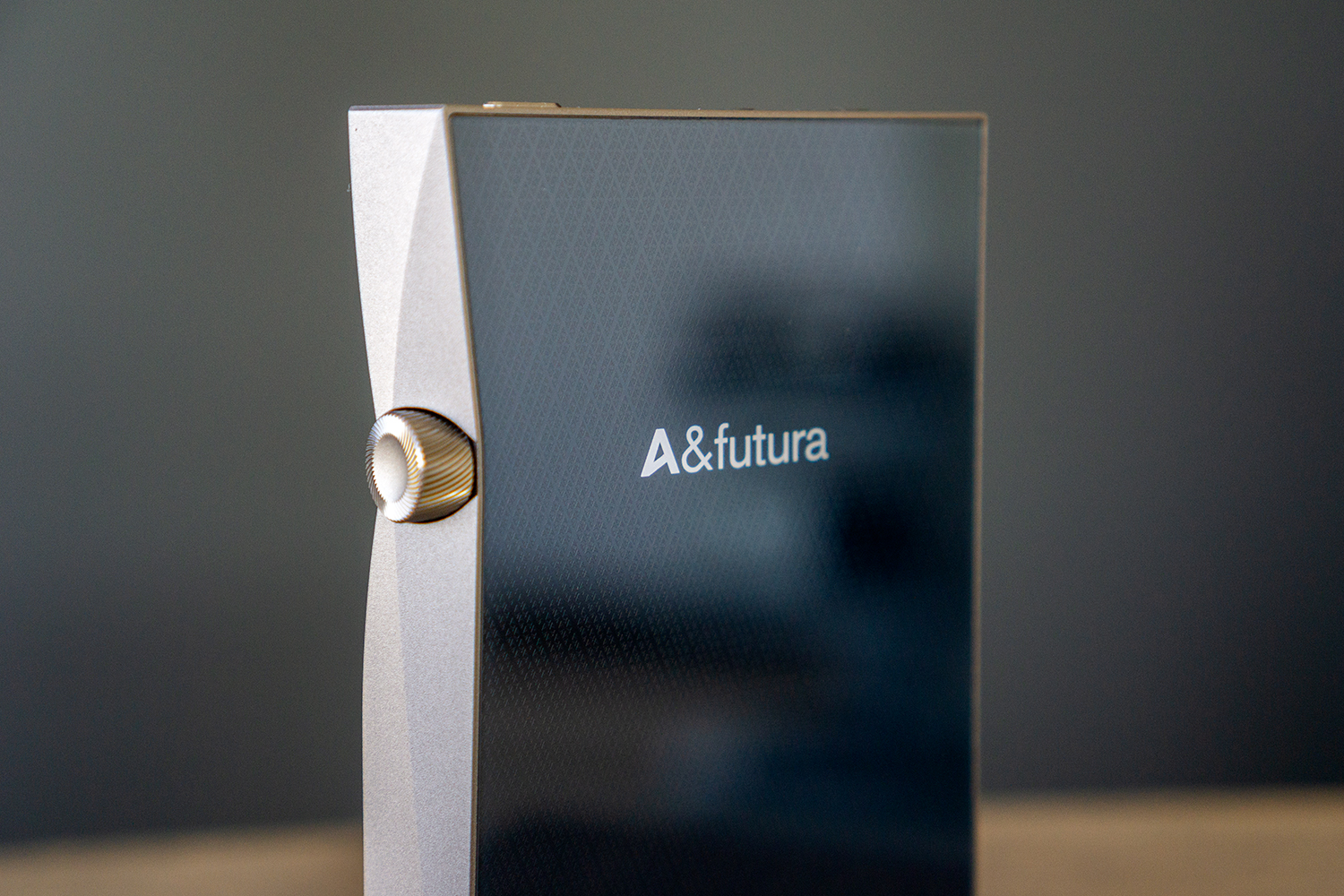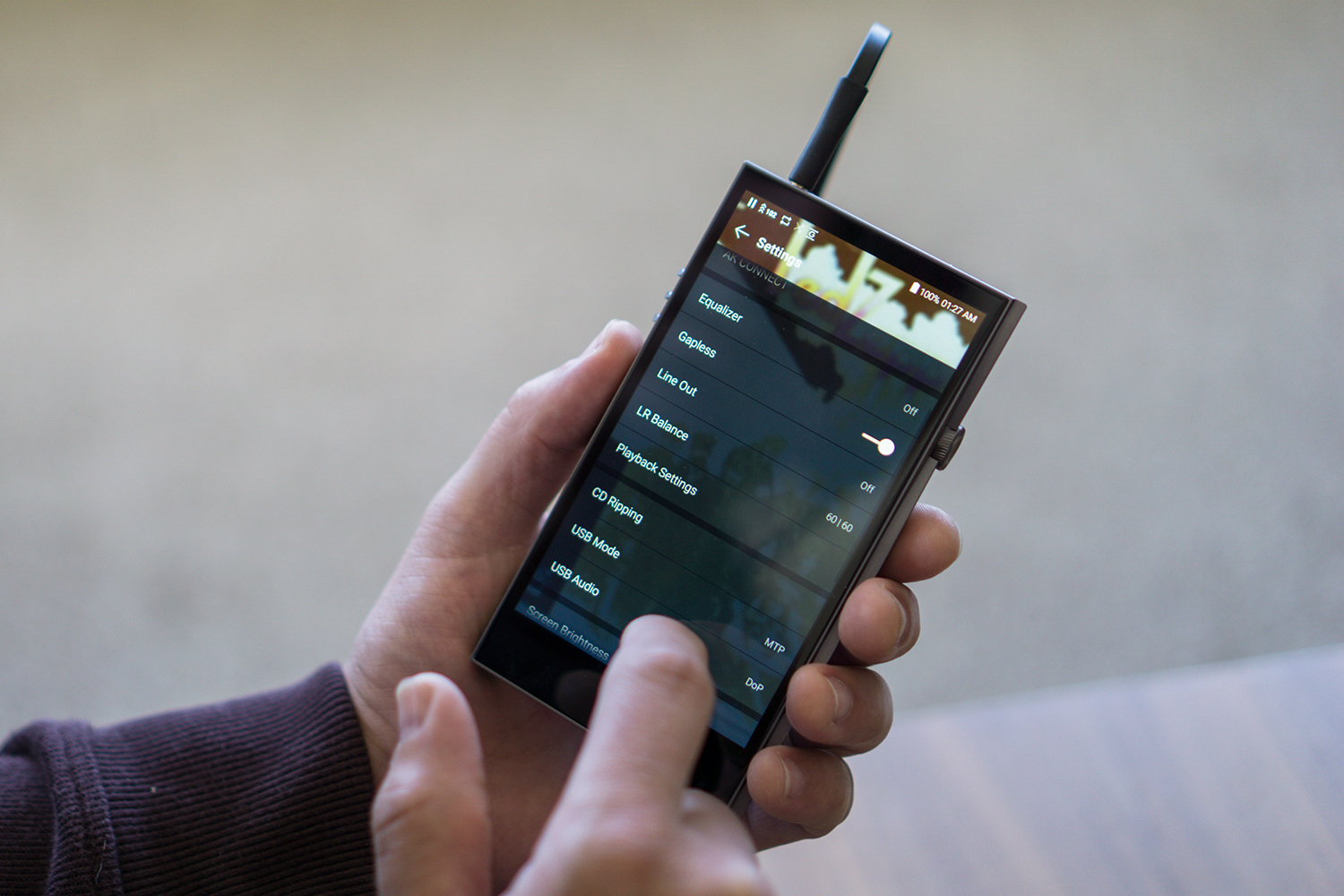Astell & Kern is one of those pesky audio companies that just won’t stop innovating, like that annoying classmate who was always pushing the grade curve and reminding the teacher of that missing pop quiz. This utterly meticulous engineering is what has kept the niche brand in business so long, and it’s also what leads to impressive evolutions like the company’s new A&futura SE100 portable player ($1,700).
Part of Astell & Kern’s new “A&” model rollout (an oddly chosen moniker device that includes model types like the A&ultima and A&norma), the A&futura has all the design traits we’ve come to associate with the company’s lineup – chic metallic exterior, sharp angles, and glass-plated carbon webbing on the back. But inside, the A&futura is loaded with all-new components for a sonic performance that is nothing shy of mesmerizing.
Sharp design
Straight from the package, the SE100’s physical design is as gorgeous as it is modern. Perhaps due to its wide stance, the device feels impressively light compared to some previous models in the lineup, especially when compared to the brick-heavy A&ultima SP1000, which weighs in at a massive 13.4 ounces. The SE100’s 8.5 ounces is about par for the brand elsewhere in the lineup.
The SE100’s physical design is as gorgeous as it is modern.
While we’ve gotten used to Astell & Kern’s penchant for sharp, Lamborghini-esque angles, the rhombus-like profile makes it a bit, well, awkward. We got used to it over time, but at first it felt as if the player was trying to escape our hand each time we picked it up. A separate power key on top replaces the integrated power control on the volume dial used in previous models. It took us a while to get used to the change, tapping the volume dial multiple times in a vain attempt to wake the screen.
In most other respects, the SE100’s design borrows heavily from its predecessors, including said volume dial on the right side for granular 150-point volume control and triple buttons on the left to supplement touch-screen playback controls. Outputs include both a 3.5mm headphone jack and 2.5mm balanced out on top, flanked by a USB 3.0 type-C port at the bottom for charging and lightning-fast file transfers, allowing you to drag and drop entire FLAC albums in mere seconds. Battery life is rated at 11 hours, but you can expect more like 9 to 10 hours depending on file type and volume level.
Behind the angles
Speed is a theme with the SE100 and its new Octa-core processor isn’t just marketing speak; this is by far the most responsive player we’ve seen yet from the brand. Features that have become standard in Astell & Kern’s flagship models like DAC mode, Wi-Fi and Bluetooth streaming (with aptX HD, of course), and Tidal support are all present, for a welcome mix of playback options.

File support includes just about everything you can throw at the device, including native DSD files at up to 11.2 MHz, and PCM files at up to 32bit/384kHz. Onboard storage is 128GBs, with an SD card slot for add-on storage.
Perhaps the most notable new addition for the SE100 is ESS Sabre’s ES9038 Pro 8-channel DAC (a first in the A&K line) which the company claims was designed for professional recording studios and high-end home audio systems. The chipset sends four digital audio channels to each of the SE100’s dual stereo amplifier modules. Put together, the new machine achieves a better signal-to-noise ratio (123 dB @ 1kHz) and lower harmonic distortion than even Astell & Kern’s former flagship model, the AK380. All this in the company’s more affordable middle-range device. As we said, this company is relentlessly innovative.
The sound
The SE100’s new guts equate to shockingly accurate sound performance, including incredible clarity and a downright ridiculous soundstage, providing a stereo image your ears can explore like a Six Flags amusement park. Sound is richer, deeper, and smoother than expected, while remaining utterly clear and supremely well defined.
A cursory exploration of The Beatles’ Abbey Road (24bit/44.1kHz) with our Audeze Sine headphones revealed corners and crannies of the stereo image we’d yet to experience in countless playbacks, showcasing dozens of notable moments, including bubbling, brassy electric guitar, chocolatey smooth bass lines, glowing brass, and textural snare hits that seem to reveal each stick hit as if under an electron microscope.
The downright ridiculous soundstage provides a stereo image your ears can explore like a Six Flags amusement park.
We’d never realized Her Majesty (Paul’s adorable add-on song) was mixed with such starkly clear stereo movement from right to left, tracing from deep right, to middle right (and forward a bit), to center image, to middle left before finishing (and never quite getting all the way left). Come Together actually showed off a new “ticka-ticka” percussion sound in the instrumental breakdown, while we (somewhat embarrassingly) realized for the first time the harmonies in Carry the Weight were saying “love you.”
Another shocking demonstration came with a return to a long-shelved favorite, Led Zeppelin 2 (24bit/96kHz). We can’t be sure how much of this was just our shoddy audio equipment from our last listen several years back, but it really was an entirely new album. The tracks were rougher, dirtier, and panned harder than we remember, capped by crazy-clean resolution for simple things like the hand percussion thumps in Ramble On. While we were previously listening to CD-quality tracks, it was almost otherworldly how different it sounded through the SE100.
Perhaps most notably, even when listening with Shure’s stunningly accurate KSE1200 electrostatic headphones, the SE100 stood up remarkably well to the A&ultima SP1000. The SP1000 is brighter and cleaner at the attack, and also offers more instrumental definition and resonance, especially notable when vocals hang on with some reverb. That said, we were surprised by how well the SE100 held its own, especially considering it costs half the price, possibly thanks to its new DAC architecture.
Conclusion
So much more than just numbers, Astell & Kern’s new A&futura SE100 is a stunning new ambassador for the brand’s mid-range lineup, offering incredible performance, brilliantly fast response, and all the features you could possibly want. If you’re in the market for a new hi-res player — and you don’t mind the wild-angled design — even at $1,700, this one’s a deal.
